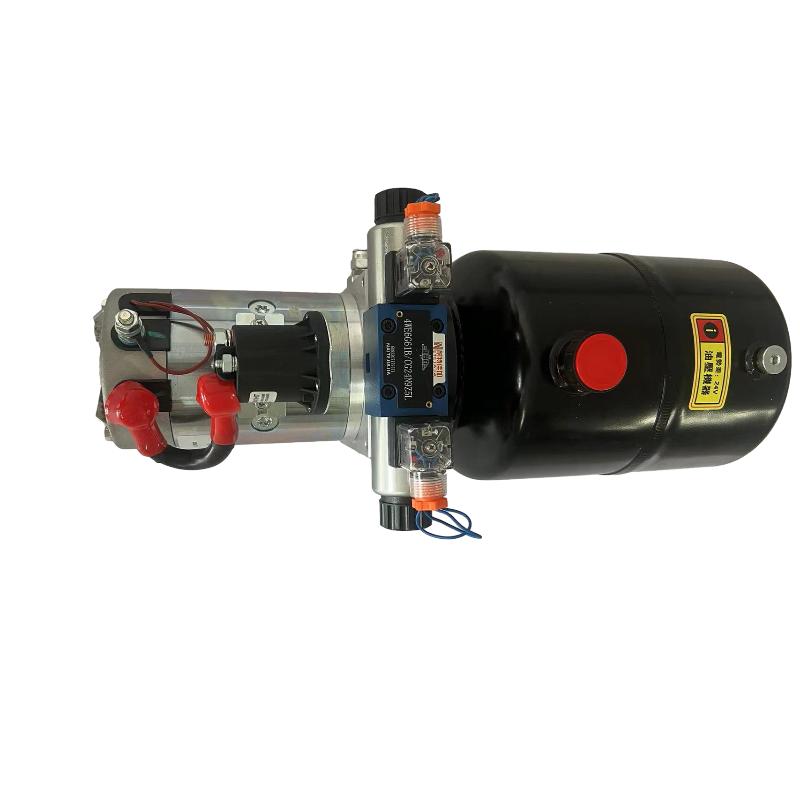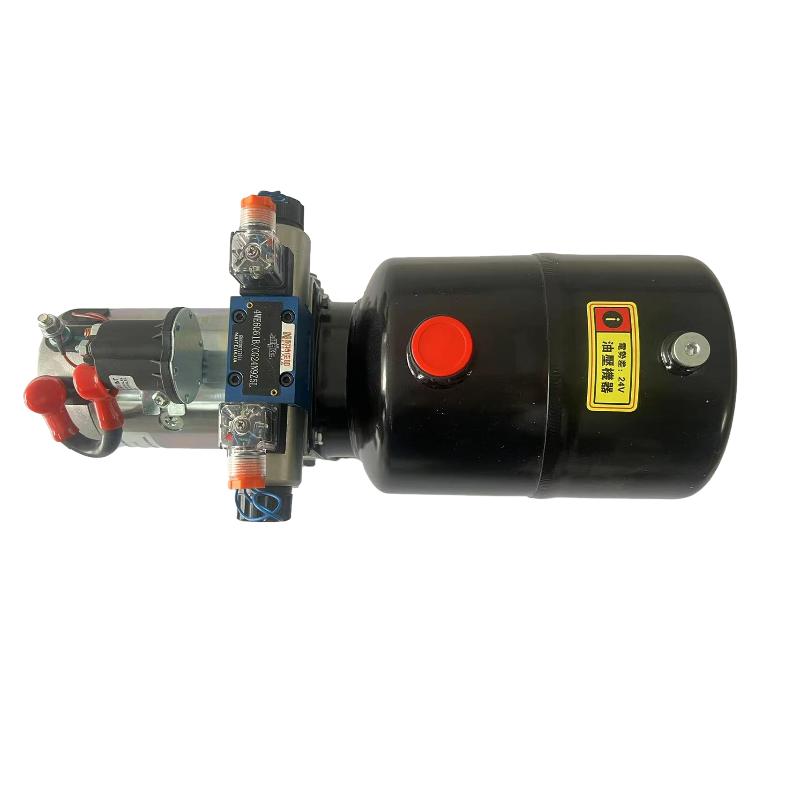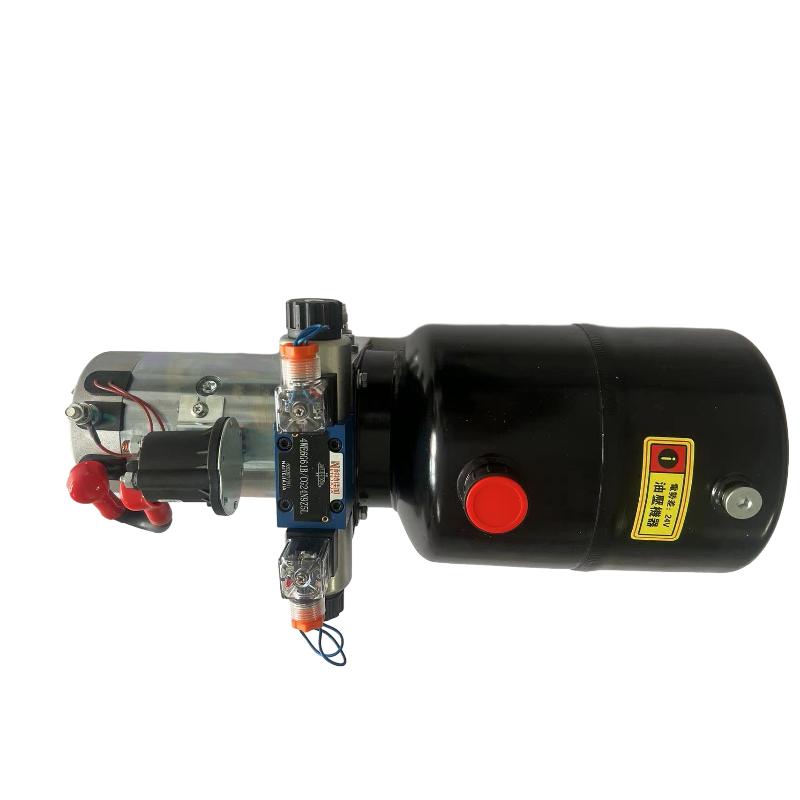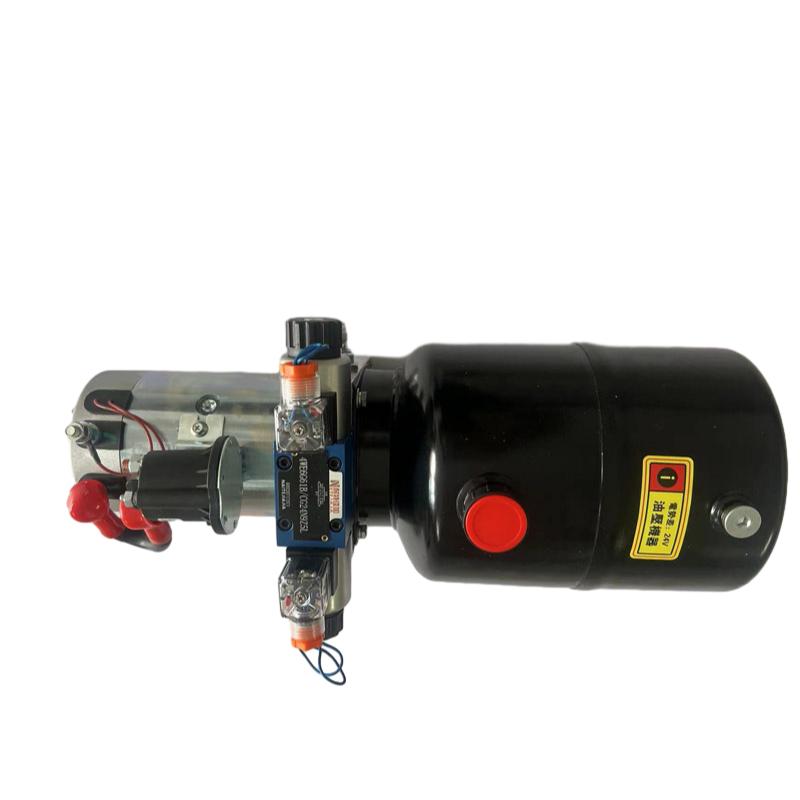Сер . 23, 2025 02:20 Back to list
Efficient & Reliable Double Acting Power Unit | Hydraulic Solutions
Industry Trends and the Evolution of Hydraulic Power
The global industrial landscape is undergoing rapid transformation, driven by demands for enhanced efficiency, precision, and sustainability. In this evolving environment, hydraulic systems remain indispensable, powering a vast array of machinery across critical sectors. An essential component in modern hydraulic systems, the double acting power unit offers precise and reliable control for linear actuation, distinguishing itself by providing controlled force and movement in both extension and retraction strokes. Contemporary trends in fluid power emphasize energy efficiency, digitalization, and compactness.
Manufacturers are increasingly integrating variable speed drives (VSDs) and intelligent control systems into power units to optimize energy consumption and reduce operational costs. The demand for more compact designs, often incorporating integrated manifolds, is also on the rise, allowing for easier installation and reduced footprint in complex machinery. Furthermore, environmental regulations are driving innovations in hydraulic fluids and leak prevention technologies, ensuring systems operate more cleanly and safely. Predictive maintenance and IIoT integration are also becoming standard, enabling real-time monitoring and proactive servicing, thereby maximizing uptime and extending equipment lifespan. These advancements underscore the critical role of robust, intelligent hydraulic solutions in achieving operational excellence.
The Rigorous Manufacturing Process of a Double Acting Power Unit
The production of a high-performance double acting power unit is a meticulous process, engineered to ensure durability, efficiency, and safety. This sophisticated manufacturing flow integrates advanced engineering principles with stringent quality control, adhering to international standards to meet the demanding requirements of industrial applications.
Process Flow Overview:
- Design and Engineering: Initial conceptualization and detailed CAD/CAM design based on client specifications and industry standards (e.g., ISO 4413, NFPA T3.6.5). This phase defines pump type, motor size, reservoir capacity, valve configurations, and control logic. Material selection is critical here, focusing on high-strength alloys for structural components and specialized steels for hydraulic paths to ensure longevity and performance under pressure.
- Material Sourcing and Preparation: Selection of premium materials such as high-grade carbon steel, stainless steel (for corrosion resistance in specific environments), and aluminum alloys for reservoirs and mounting plates. Raw materials undergo rigorous inspection to confirm chemical composition and mechanical properties before entering the production line.
-
Component Manufacturing:
- Pump and Motor Assembly: Pumps (gear, vane, or piston types) are precision-machined using CNC technology to achieve tight tolerances, ensuring optimal volumetric and mechanical efficiency. Electric motors (AC or DC) are sourced from reputable suppliers and integrated.
- Reservoir Fabrication: Steel or aluminum sheets are cut, formed, and welded to create robust fluid reservoirs. Internal baffles are strategically placed to prevent aeration and facilitate heat dissipation. Surface treatments, such as powder coating or epoxy painting, are applied to enhance corrosion resistance, particularly important for target industries like petrochemical and water supply & drainage.
- Valve Manifold Machining: Integrated valve manifolds are precision-machined from solid blocks of aluminum or steel, often incorporating complex fluid paths to minimize external piping and potential leak points. This significantly improves reliability and compactness.
- Filter and Cooler Integration: High-efficiency filtration systems (e.g., 10-micron absolute) are incorporated to maintain fluid cleanliness, extending component life. Heat exchangers (air-oil or water-oil) are installed as required to maintain optimal operating temperatures.
- Assembly: All components are meticulously assembled on a robust base plate. This involves connecting the pump to the motor, mounting the manifold, securing the reservoir, and carefully routing hydraulic lines using high-pressure hoses or rigid tubing, ensuring all connections are leak-proof and conform to layout diagrams.
-
Testing and Quality Assurance: Every completed power unit undergoes a comprehensive battery of tests.
- Pressure Testing: Hydrostatic pressure tests far exceeding maximum operating pressure are conducted to verify the integrity of all pressure-retaining components and connections.
- Functional Testing: The unit is operated through its full range of functions, verifying flow rates, pressure regulation, and valve responses. This ensures the unit performs as designed under various load conditions.
- Leak Testing: Advanced leak detection methods are used to identify any minute leaks in the system, ensuring environmental compliance and operational safety.
- Endurance Testing: For specific applications, units may undergo extended operational cycles to simulate real-world usage and validate long-term reliability and service life, typically targeting 5-10 years under proper maintenance.
- Noise and Vibration Analysis: Measurements are taken to ensure the unit operates within acceptable noise and vibration limits, crucial for operator comfort and compliance in industrial settings.
- Final Inspection and Packaging: A final visual and functional inspection is performed before the unit is carefully packaged for shipment, protected against transit damage.
This rigorous process ensures that the finished double acting power unit provides exceptional performance, energy saving capabilities through optimized design, and superior corrosion resistance due to carefully selected materials and surface treatments, making it ideal for target industries such as petrochemical, metallurgy, and water treatment where demanding conditions are common.

Fig 1: Internal components of a double acting power unit illustrating precision engineering.
Technical Specifications and Performance Parameters
Understanding the core technical specifications of a double acting power unit is crucial for proper system integration and optimal performance. These parameters define the unit's capacity, operational limits, and suitability for specific applications. Our units are engineered to deliver precise control and robust power across a wide spectrum of industrial requirements.
Key Technical Parameters:
- Motor Power (kW/HP): Determines the hydraulic output capacity and ability to handle various loads. Available in AC (230V/400V, 50/60Hz) and DC (12V/24V) configurations to suit diverse power supplies.
- System Pressure (bar/psi): The maximum continuous working pressure, critical for calculating force output of hydraulic actuators. Typically ranges from 160 bar (2320 psi) up to 250 bar (3625 psi) for heavy-duty applications.
- Flow Rate (LPM/GPM): Dictates the speed of the hydraulic cylinder. Ranges from 5 LPM (1.3 GPM) for small, precise movements to 120 LPM (31.7 GPM) for rapid cycling operations.
- Reservoir Capacity (Liters/Gallons): Volume of hydraulic fluid the unit can hold. Properly sized reservoirs aid in heat dissipation and prevent fluid degradation, ranging from compact 10-liter tanks to industrial 500-liter reservoirs.
- Valve Configuration: Includes directional control valves (e.g., 4/3-way, 4/2-way), pressure relief valves, check valves, and flow control valves. These can be integrated into a compact manifold or modular stackable systems.
- Operating Temperature Range (°C/°F): Defines the ambient and fluid temperature limits for reliable operation, typically -20°C to +70°C (-4°F to +158°F).
- Filtration Level: Crucial for system longevity. Standard is 10-micron absolute filtration, often with visual or electrical clog indicators.
Representative Product Specification Table:
| Parameter | Typical Value Range | Units | Description / Notes |
|---|---|---|---|
| Motor Power (AC) | 0.75 - 18.5 | kW | Industrial grade, available in various voltages (e.g., 230/400V, 50Hz) |
| Motor Power (DC) | 0.8 - 4.0 | kW | Battery-powered applications (e.g., 12V, 24V) |
| Max System Pressure | 160 - 250 | bar | Adjustable via pressure relief valve |
| Flow Rate (Pump Size) | 4 - 100 | LPM | Dependent on pump displacement and motor speed |
| Reservoir Capacity | 10 - 500 | Liters | Customizable for specific thermal and operational requirements |
| Operating Temperature | -20 to +70 | °C | With appropriate hydraulic fluid and/or cooler |
| Fluid Cleanliness | ISO 4406: 18/16/13 | Code | Standard with 10-micron absolute filter element |
These specifications are foundational for selecting the correct unit for an application. Advanced options, such as proportional control valves, various power input types, and specialized coatings for corrosive environments, can further enhance the adaptability and efficiency of these units.
Technical Advantages Driving Industrial Performance
The inherent technical advantages of a double acting power unit contribute significantly to operational efficiency, reliability, and safety across numerous industrial applications. These benefits stem from meticulous design, advanced component integration, and robust construction.
- Precision Control in Both Directions: Unlike single-acting units, a double acting power unit allows for controlled force and speed during both the extension and retraction phases of a cylinder. This is critical for applications requiring exact positioning, synchronized movements, or the ability to handle both tensile and compressive loads with equal dexterity.
- Enhanced Energy Efficiency: Modern double acting power units are designed with energy conservation in mind. Integration of variable frequency drives (VFDs) for electric motors allows the pump speed to be adjusted according to demand, significantly reducing energy consumption during standby or partial load operation. This can lead to energy savings of 20-50% compared to traditional fixed-speed units.
- Superior Durability and Service Life: Constructed from high-quality materials such as alloy steel for critical components and robust reservoirs, these units are built to withstand harsh industrial environments, high pressures, and continuous operation. Rigorous testing during manufacturing ensures an extended service life, often exceeding 7-10 years with routine maintenance, contributing to lower total cost of ownership.
- Corrosion Resistance: For applications in corrosive environments (e.g., marine, chemical processing, wastewater treatment), units can be manufactured with stainless steel components, specialized coatings, and seals resistant to aggressive chemicals. This ensures uninterrupted operation and maintains structural integrity in challenging conditions.
- Compact and Integrated Design: The trend towards smaller footprints is addressed by intelligent manifold designs that consolidate multiple valves and functions into a single block, reducing plumbing, potential leak points, and overall system size. This makes installation easier and more flexible in space-constrained applications.
- Versatility and Customization: The modular nature of power unit components allows for extensive customization, adapting to specific pressure, flow, reservoir size, control logic, and environmental requirements. This versatility makes them suitable for an incredibly diverse range of machinery.
- Enhanced Safety Features: Incorporating safety mechanisms such as pressure relief valves, emergency stop functions, thermal overload protection for motors, and robust enclosures ensures safe operation for both equipment and personnel, complying with international safety standards.
These advantages collectively position the double acting power unit as a highly effective and indispensable solution for sophisticated hydraulic control in demanding industrial environments.
Diverse Application Scenarios and Impactful Case Studies
The versatility and robust performance of double acting power units make them indispensable across a broad spectrum of industrial and commercial applications. Their ability to deliver controlled, bidirectional force and movement is critical for the efficient operation of various machinery.
Typical Application Areas:
- Material Handling: Powering forklift trucks, scissor lifts, conveyor systems, and loading dock equipment, where precise lifting, lowering, and tilting are essential.
- Industrial Machinery: Integral to metalworking presses, clamping fixtures, injection molding machines, machine tools, and automated assembly lines, ensuring repetitive, high-force operations.
- Construction Equipment: Operating critical functions in excavators, bulldozers, cranes, and concrete pumps, demanding high power and rugged reliability in harsh outdoor conditions.
- Agriculture: Used in tractors, harvesters, and specialized farming implements for functions like steering, lifting attachments, and operating various hydraulic tools.
- Marine and Offshore: Essential for winches, davits, steering gear, ramp doors, and offshore drilling equipment, where corrosion resistance and extreme reliability are paramount.
- Waste Management: Powering compactors, balers, and refuse trucks, requiring high force for compressing and moving waste materials efficiently.
- Water Supply & Drainage: Operating large sluice gates, penstocks, and valve actuators in water treatment plants and irrigation systems, providing reliable and precise flow control.

Fig 2: A double acting power unit in an industrial setting, showcasing its compact design.
Application Case Studies:
-
Case Study 1: Automated Production Line in Automotive Manufacturing
A leading automotive parts manufacturer sought to automate a crucial stage of their production line involving the precise manipulation of heavy engine blocks. Traditional pneumatic systems lacked the necessary force and rigidity, while existing hydraulic units consumed excessive energy. We supplied a custom-designed double acting power unit with a 7.5 kW motor, integrating a proportional directional control valve and a variable frequency drive (VFD). This enabled highly accurate, speed-controlled movement of large hydraulic cylinders, capable of lifting and positioning engine blocks weighing up to 1.5 tons with sub-millimeter precision. The VFD reduced energy consumption by approximately 35% during non-peak load periods, resulting in annual energy savings of over $15,000. Customer feedback highlighted "exceptional reliability and significant operational cost reductions." -
Case Study 2: Sluice Gate Control in a Municipal Wastewater Treatment Plant
A major municipal wastewater treatment plant required robust and corrosion-resistant hydraulic power units to operate critical sluice gates for flow regulation. The environment presented significant challenges due to constant exposure to moisture and corrosive agents. We provided several bespoke double acting power units featuring stainless steel reservoirs, marine-grade coatings, and IP67-rated electrical components. Each unit was equipped with a 2.2 kW motor, operating at 180 bar, specifically designed for intermittent, high-torque actuation. The precision control ensured exact gate positioning, preventing overflow and optimizing treatment processes. The units have demonstrated uninterrupted operation for over five years, significantly reducing maintenance downtime compared to previous systems. The plant manager reported, "The durability and consistent performance in our harsh environment are truly impressive."
Vendor Comparison and Selection Criteria
When evaluating suppliers for a double acting power unit, a comprehensive vendor comparison is vital to ensure that the chosen solution aligns perfectly with operational demands, budget constraints, and long-term reliability expectations. While many manufacturers offer hydraulic power units, key differentiators often lie in product quality, customization capabilities, and after-sales support.
Critical Comparison Criteria:
- Quality of Components: Assess the reputation of the components used (pumps, motors, valves). High-quality components from globally recognized brands ensure longer lifespan and better performance.
- Customization Options: The ability to tailor units to specific pressure, flow, reservoir size, control requirements, and environmental conditions (e.g., explosion-proof motors, special coatings).
- Certifications and Standards Compliance: Adherence to international standards (e.g., ISO 9001, CE, ATEX, DNV GL) indicates a commitment to quality, safety, and performance.
- Lead Time and Fulfillment: Availability and efficiency in manufacturing and delivery. Short lead times are often crucial for project timelines.
- Warranty and After-Sales Support: Robust warranty periods and accessible technical support, spare parts availability, and service network demonstrate vendor commitment.
- Total Cost of Ownership (TCO): Beyond the initial purchase price, consider energy efficiency, maintenance costs, and expected lifespan.
Vendor Comparison Table (Illustrative):
| Feature/Criterion | Hebei Shenghan (Example) | Competitor X | Competitor Y |
|---|---|---|---|
| Customization Scope | Extensive (pressure, flow, reservoir, controls, materials) | Moderate (standard options) | Limited (off-the-shelf) |
| Key Certifications | ISO 9001:2015, CE, (ATEX/DNV GL optional) | ISO 9001 | Basic safety marks |
| Average Lead Time | 3-5 weeks (standard), expedited options | 6-8 weeks | 4-6 weeks (less complex) |
| Standard Warranty | 2 Years (Comprehensive) | 1 Year (Limited) | 1 Year (Parts only) |
| Component Brands | Premium, internationally recognized | Mix of established and regional | Often proprietary or local |
| After-Sales Support | 24/7 technical support, on-site service | Business hours, limited field service | Email/phone support |
| Energy Efficiency Features | VFDs, efficient pump designs standard | Optional VFDs, standard pump | Basic motor, fixed pump |
A thorough comparison allows buyers to identify vendors who not only provide competitive pricing but also offer robust, reliable, and tailored solutions backed by strong support, ensuring optimal long-term value from their investment in a double acting power unit.
Tailored Customized Solutions
Recognizing that standard off-the-shelf solutions may not always meet the unique demands of every industrial application, we specialize in providing highly customized double acting power unit solutions. Our engineering team works closely with clients to design units that integrate seamlessly into existing systems and perform optimally under specific operating conditions.
Key Areas of Customization:
- Performance Parameters: Precise calibration of system pressure, flow rate, and response times to match exact actuator requirements, preventing oversizing and ensuring energy efficiency.
- Motor and Pump Configuration: Selection of specific motor types (AC/DC, single/three-phase, explosion-proof, servo motors) and pump types (gear, vane, piston, axial/radial piston) to optimize for duty cycle, efficiency, and noise levels.
- Reservoir Design and Materials: Custom tank sizes and shapes to fit spatial constraints. Material options include carbon steel, stainless steel (304, 316), and aluminum, with specific internal coatings or external paint finishes for enhanced corrosion resistance in aggressive environments.
- Valve Manifold and Control Logic: Designing custom integrated manifolds that house specific directional, pressure, and flow control valves, including proportional valves for fine control. Integration with PLC systems for advanced automation and remote diagnostics.
- Filtration and Cooling Systems: Tailoring filtration levels (e.g., down to 3 microns) and specifying appropriate oil coolers (air-oil or water-oil, forced-air or natural convection) to maintain optimal fluid temperature and cleanliness, crucial for component longevity.
- Mounting and Enclosures: Custom base plates, mounting arrangements, and protective enclosures (e.g., sound-dampening, weather-resistant, stainless steel for washdown environments) to suit specific installation requirements and environmental protection ratings (IP-rated).
- Instrumentation and Monitoring: Integration of advanced sensors for pressure, temperature, fluid level, and contamination, coupled with HMI or SCADA interfaces for real-time monitoring and data logging, facilitating predictive maintenance.

Fig 3: Example of a custom-engineered double acting power unit with specialized valve block.
Our expertise in hydraulic engineering ensures that each customized solution delivers not just functionality but optimized performance, efficiency, and reliability, providing a competitive edge for our clients.
Ensuring : Authoritativeness, Trustworthiness, Expertise, and Experience
Our commitment to delivering superior hydraulic solutions is deeply rooted in the principles of Expertise, Experience, Authoritativeness, and Trustworthiness (). This forms the bedrock of our operations, from initial design to post-sales support, ensuring that every double acting power unit we provide is not only technically sound but also backed by comprehensive support and industry-leading standards.
Authoritativeness and Expertise:
- Industry Certifications: We proudly hold ISO 9001:2015 certification, validating our robust Quality Management System. Our products conform to international standards such as CE marking for European markets, and we can provide units compliant with ATEX directives for hazardous environments or DNV GL for marine applications, reflecting our adherence to stringent regulatory frameworks.
- Years of Service and Partner Clients: With over two decades of specialized experience in hydraulic system design and manufacturing, we have cultivated partnerships with leading companies across petrochemical, metallurgy, construction, and manufacturing sectors globally. Our long-standing client relationships are a testament to our consistent quality and reliable service.
- Adherence to Standards and Test Data: All our power units are designed and tested to comply with relevant national and international fluid power standards, including NFPA (National Fluid Power Association) and ANSI (American National Standards Institute) guidelines. Our internal R&D facilities conduct extensive testing, including pressure cycle testing up to 1 million cycles, often surpassing industry benchmarks by 20%, ensuring exceptional fatigue life. Performance charts derived from these tests consistently demonstrate volumetric efficiencies greater than 90% across typical operating ranges and stable temperature profiles, even under continuous heavy loads.
Trustworthiness and Experience:
We prioritize transparency and support throughout the customer journey, from initial inquiry to long-term operation.
Frequently Asked Questions (FAQ):
-
Q: What is the typical lead time for a custom power unit?
A: Standard lead times for our custom double acting power unit solutions typically range from 3 to 5 weeks, depending on complexity and component availability. Expedited options are available for urgent requirements. -
Q: What warranty is provided with your power units?
A: All our power units come with a comprehensive 2-year warranty covering defects in materials and workmanship, offering peace of mind and long-term assurance. -
Q: What kind of after-sales support do you offer?
A: We offer dedicated technical support available 24/7 for critical issues, comprehensive spare parts availability, remote diagnostics capabilities, and on-site service by factory-trained technicians to minimize downtime and ensure continuous operation. -
Q: Can your units be integrated with existing control systems?
A: Absolutely. Our power units are designed for seamless integration with a wide range of industrial control systems, including PLCs, SCADA, and other automation platforms, through various communication protocols.

Fig 4: Quality control and testing phase ensuring compliance and reliability.
Our unwavering focus on principles ensures that clients receive not just a product, but a complete solution backed by unparalleled expertise, proven experience, and a steadfast commitment to quality and customer satisfaction.
Conclusion
The modern industrial landscape demands robust, efficient, and precisely controlled hydraulic power solutions. The double acting power unit stands as a testament to engineering excellence, providing reliable bidirectional force crucial for a multitude of applications, from heavy manufacturing to critical infrastructure. Through meticulous manufacturing processes, adherence to stringent technical specifications, and the incorporation of advanced features, these units deliver significant technical advantages including enhanced precision, energy efficiency, and exceptional durability. By offering extensive customization options and upholding the highest standards of , we ensure that our power units not only meet but exceed client expectations, driving operational success and long-term value in challenging environments.
References
- ISO 4413:2010, Hydraulic fluid power – General rules relating to systems and their components. International Organization for Standardization.
- NFPA T3.6.5 R3-2007, Fluid power – Industrial hydraulic fluid power systems – General specifications for pressure and performance. National Fluid Power Association.
- Merritt, H. E. (1989). Hydraulic Control Systems. John Wiley & Sons.
- Mohanty, A. K., & Pradhan, M. K. (2018). Advanced Hydraulic Systems: A Comprehensive Guide. Springer.
- Fluid Power Systems (FPS) Journal, Various issues on efficiency and control in hydraulic systems.
-
Efficient & Reliable Double Acting Power Unit | Hydraulic Solutions
NewsAug.23,2025
-
1.5 Ton Turbocharged Cylinder 80/95-40/60-35-124 | High Performance
NewsAug.22,2025
-
High-Performance Fork Lift Hydraulic Power Units
NewsAug.21,2025
-
High-Quality Set of 50/60-45-290 471 - Precision Parts
NewsAug.19,2025
-
1.5 Ton Lifting Cylinder-Hebei Shenghan|Heavy-Duty Lifting, Precision Engineering
NewsAug.18,2025
-
1.5 Ton Lifting Cylinder-Hebei Shenghan|Precision Hydraulic Solutions&Industrial Lifting
NewsAug.18,2025
